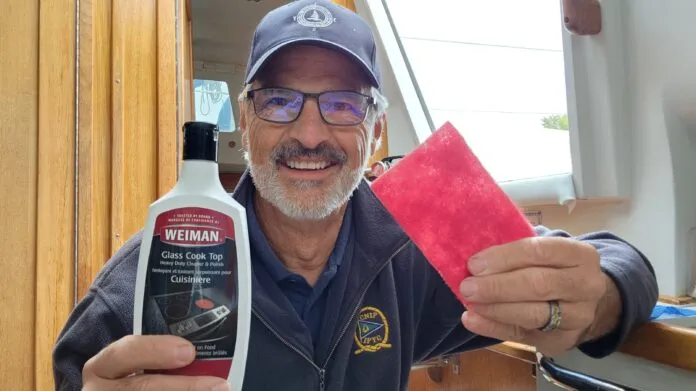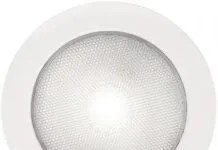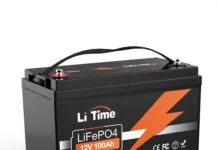
How does the saying go again? “Necessity is the mother of invention,” or something along those lines? And so it was earlier this week when one of the Facebook groups I belong to had a discussion around how to remove the yellowing of our gelcoat surfaces.
Fellow group members shared their go-to processes and products, many saying, alas, the end results were never as good as they would have liked. The effects of yellowing caused by years, even decades, of sun, climate exposure and time, still remained.
Some did have good results using multi-step products and processes, many requiring mechanical tools such as polishers, buffers and sanders. Which is fine, if one enjoys more time consuming, complicated processes and cash outlay. That is not my philosophy. If I can find a quicker, easier and more effective way, I’m in!
Of course, like most DIYers, I’m always looking for great results. But, in my case, I also look for any opportunity to achieve said great results with the easiest and least costly alternatives. So perhaps the aforementioned saying should be “Necessity is the mother of hacking.”
IDEAS FROM THE HOME KITCHEN

Like many other couples we know, my wife and I share domestic duties around the house. When it comes to the kitchen, she’s the cook (and an amazing one at that), and I have clean-up duty. One of my many tasks includes keeping our ceramic cook top clean, polished and looking like new.
When reading this week’s Facebook discussion about restoring gelcoat and fiberglass surfaces, it reminded me that every time I polish the stove top, I tell myself to try this product on the boat. If it works wonders on burned-on cooking residue on glass stove tops, leaving a perfectly clean polished surface, I could not see any reason why it would not work on fiberglass or gelcoat.
So yesterday was the day. And what an amazing discovery it was. I applied the stove top cleaning and polishing gel with a red Scotch-Brite pad, using the same method as the stove top. All the yellowing and long-time scuffs and marks were gone in record time, leaving nothing but a super smooth, white, scuff- and stain-free surface.
I was so impressed by the easy and fast results, my cheeks were sore from smiling so much!
AFTER CLEANING, APPLY WASH AND WAX TO PROTECT THE GELCOAT

Once I completed polishing the entire cockpit area, I used a wet cloth to make sure the surface was clean and free of any residual polish. As the surface and the polish are both white, it was hard to see if there was any leftover residue. Once satisfied the surface was clean, I protected the newly restored area with a waterless spray-on wash and wax.
I’ve been using the DryShine brand for more than a decade with awesome results. It is a super easy application process, regardless of shade or sun exposure. It truly works on all surfaces, including plastic windows, headlights, painted metals, etc. It’s an excellent all-around product that I keep onboard, at home and in the car.
Another product I’ve been using for decades on all my boats are automotive wash and wax products. Again, another hack with great results. It is easy to wash and rinse.
CONCLUSION
The results of the cooktop polisher have been just as impressive on all other surfaces, including inside the cabin, the head/shower area, counter tops, etc.
To share the easy process and amazing results, I also made a video I think you, the readers, will appreciate.

































IMO Scotchbrite pads are too agressive, and the cook top cleaner is simply a polishing compound, probably formulated from one of the 3M grades of compounds.
Hello Stuart, you 100% correct. I believe I also corrected myself on the pad used. It is red, however not a Scotch Brite pad which, as you said, is too aggressive. The red pad I use is one sold by the stove top polisher brand. As for it being simular to other automotive or marine polishers, you are also correct. But the price of the stove top priducts is a much lower. And honestly, I think is easy to use. Thanks for you comment and for supporting Practical Sailor! Fair winds always.
I tried your recommendation using both the glass cooktop cleaner and the red scrubbing pad also manufactured by Weiman and it worked. Scuff marks I had been trying to remove for years with all different products were unsuccessful until this one!
Hey William, thanks for your comment. Super happy it worked so well for you!
Nice tip. Will need to try this on my nearly 40 y.o. sailboat deck.
Thanks James, let me know how it works out. I am still amazed at my results and maby fellow members at my club with 40+ years old boats have also has great results.